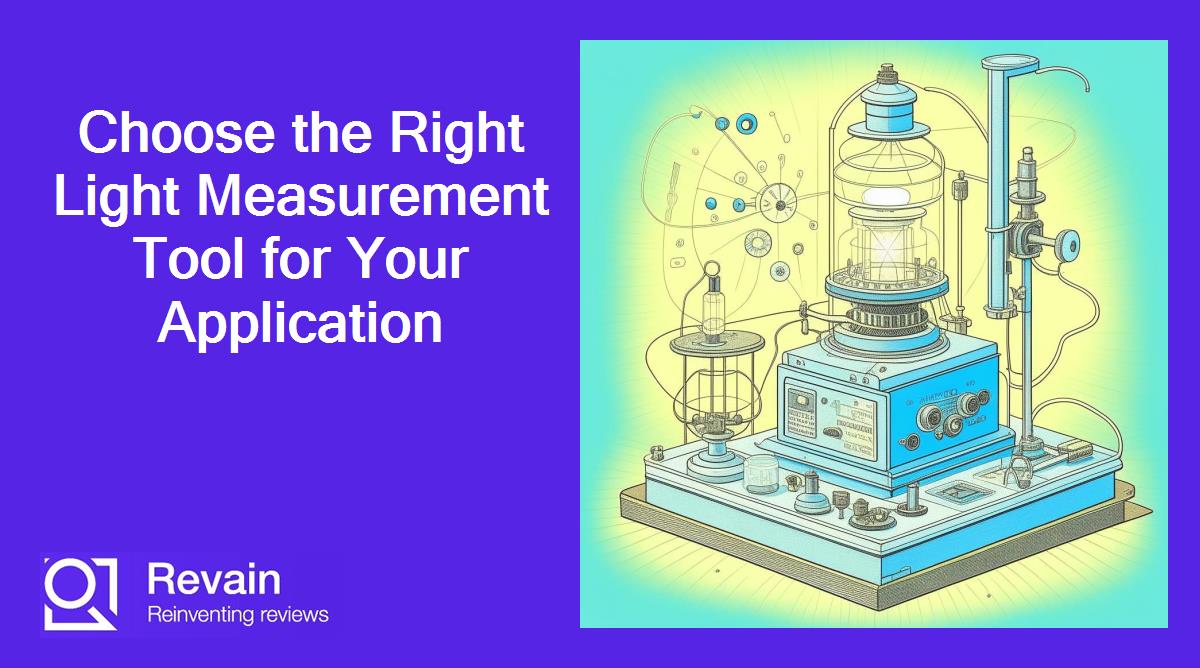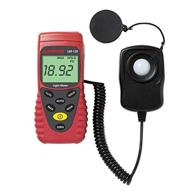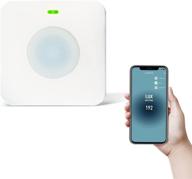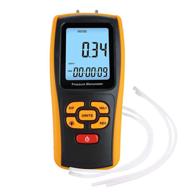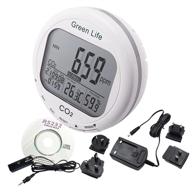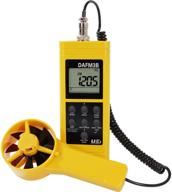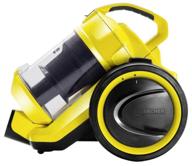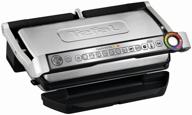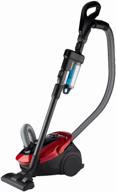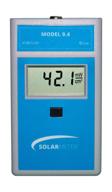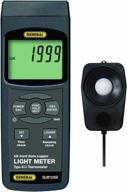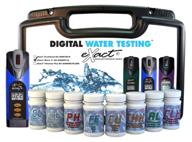Find the Perfect Light Measurement Tool for Your Needs
Introduction
Whether you are a photographer, videographer, scientist, engineer, or work in another field involving light measurement, having the right light meter can make a big difference in getting accurate and consistent data. With so many options on the market, choosing the best light meter for your specific needs and budget can be a challenge.
Top products in 🌞 Light Measurement
Types of Light Measurement Tools
There are a few main types of light meters and measurement tools:
- Handheld light meters - Portable and ideal for field use. Models range from basic incident and reflectance meters to advanced spectrometers.
- Light meter apps - Turn your smartphone or tablet into a light meter. Very affordable but quality varies.
- Benchtop/desktop meters - For lab and studio use. Offer advanced analysis features.
- Light data loggers - Record ambient light levels over time. Useful for light studies.
- Specialized meters - For specific industries like photography, theater, horticulture, etc.
Another interesting products
Key Factors to Consider When Choosing a Light Meter
Here are some key considerations when selecting a light meter:
- Type of measurements needed - Do you need incident, reflectance or both? Spectrometer?
- Accuracy - How precise must the measurements be? Look for CIE accuracy ratings.
- Features - Consider measurement ranges, analysis modes, data logging, connectivity, etc.
- Portability - Important if you'll be using in the field vs. a controlled setting.
- Ease of use - Meters range from basic single-button to advanced multi-function.
- Budget - Prices range from less than $100 for simple models to $1000+ for high-end meters.
Top Light Meters on the Market
Here are some top-rated light meters covering a range of prices and features:
| Light Meter | Key Features | Price Range |
|---|---|---|
| Sekonic L-308X-U | Incident and reflected spot metering, compact design | $200-$300 |
| GOSSEN Digipro F2 | Full spectrum, flash measurement, robust feature set | $400-$500 |
| Konica Minolta CL-500A | Spectroradiometer, lab-grade accuracy | $2000-$3000 |
Using Light Meters for Specific Applications
It's important to choose a light meter suited for your particular industry and application. Here are some examples:
- Photographers often use incident light meters to properly expose images.
- Cinematographers may use spectral light meters to match lighting between scenes.
- Horticulturists use PAR meters tailored to plant photosynthesis.
- Lighting engineers use meters to design theater and film sets.
- Researchers use calibrated spectroradiometers for lab experiments.
Getting Accurate and Reliable Measurements
To get the most accurate results from your light meter:
- Take multiple readings and average for consistency.
- Understand your meter's limitations and optimal operating conditions.
- Know the difference between incident and reflected readings.
- Calibrate your meter regularly according to manufacturer guidelines.
- Work swiftly to avoid changes in lighting between readings.
- Record relevant measurement conditions like distance, angle, etc.
Similar products
Future of Light Measurement Technology
Light measurement tools continue advancing. Some trends to watch:
- More smartphone light meter apps leveraging built-in cameras and sensors.
- Bluetooth connectivity for syncing light meter data with smartphones and computers.
- Higher CIE accuracies and wider measurement ranges.
- More specialized sensors tailored to specific industries.
- AI-powered analysis to detect patterns and anomalies in measurements.
Whether you need a basic handheld meter or an advanced spectrometer, following the guidelines above will help you find the perfect light measurement tool. Accurate light data ensures you get reliable results for your unique needs and application.
Types of Light Measurement Tools
There are several main categories of instruments used to measure light across various industries and applications:
Handheld Light Meters
Portable handheld light meters are very versatile and commonly used in the field. They include:
- Incident light meters - Measure light falling on the meter itself. Help determine exposure settings.
- Reflective light meters - Measure light reflected off a surface. Used for precise surface illumination readings.
- Combination incident and reflective meters - Allow both types of readings.
- Spectrometers - Measure light across wavelengths. Useful for spectral power distribution.
Popular brands like Sekonic, Gossen, and Konica Minolta offer models suited for photography, cinematography, stage lighting, and more.
Light Meter Apps
Turning your smartphone or tablet into a light meter is an affordable option. The camera and light sensor are used to provide basic incident and reflective readings. However, accuracy can vary greatly between different devices and apps.
Benchtop and Desktop Meters
For controlled lab and studio environments, benchtop or desktop light meters offer advanced capabilities. These include:
- Spectroradiometers - Highly accurate measurement across wavelengths. Used for calibration and research.
- Integrating sphere systems - Measure total luminous flux of a light source. Important for LED and luminaire testing.
- Goniophotometers - Analyze spatial distribution of light. Help design road and stage lighting.
Top models from makers like Gamma Scientific and Labsphere start around $2000.
Data Logging Light Meters
This special subset of light meters record measurements at set intervals over time. Applications include:
- Horticulture studies - Optimizing greenhouse and grow light conditions.
- Architectural light studies - Monitor impacts of lighting designs on occupants.
- Research - Track circadian rhythm effects or seasonal variations.
Data can be downloaded to a computer for further analysis. Popular options are from Apogee Instruments and Onset.
Choosing the right category and specific light meter model for your needs is key to capturing accurate and meaningful data.
Key Factors to Consider When Choosing a Light Meter
Selecting the best light meter for your specific application requires evaluating a few key factors:
Measurement Types Needed
Consider what type of readings you need:
- Incident light - Measures light falling on the meter. Useful for calculating camera exposure.
- Reflected light - Measures light reflected off a surface. Gives absolute illumination level.
- Spectral response - Measures light across wavelengths. Important for lab research.
Accuracy Level
Look at the CIE accuracy rating which indicates deviation from a true reading:
- AA rating - Highest accuracy ±1% for general use.
- A rating - High accuracy ±2% for most field measurements.
- B rating - Minimum ±5% accuracy for cinematography and photography.
Key Features
Consider measurement ranges, analysis modes, connectivity, and special features like:
- Multiple measurement memories to store/compare readings.
- Min/max values to see light variability.
- Flash measurement capability.
- Software for downloading, visualizing, and analyzing data.
Portability Needs
If you'll be using in the field, portability is key. Look for:
- Compact, lightweight construction.
- Ergonomic design that fits in your hand.
- Protective casing that can withstand use outdoors.
Ease of Use
Look for an interface suited to your abilities:
- Simple single-button operation.
- Menu-driven selection of advanced settings and modes.
- Smartphone connectivity for easy data transfer and monitoring.
Your Budget
Expect $100-$200 for basic handheld incident/reflected meters, $500+ for advanced spectrometers, and $2000+ for research-grade benchtop systems.
Weighing all these factors will help you find your perfect match!
Top Light Meters on the Market
With so many models available, here are some top-rated light meters representing a range of prices and features:
Sekonic L-308X-U
- Price range: $200-$300
- Key features:
- Incident and reflected spot metering
- AAA battery powered
- Weighs 5.29 oz for portability
- Measures up to 130,000 lux
- Good for: Photographers wanting an affordable, compact light meter.
GOSSEN Digipro F2
- Price range: $400-$500
- Key features:
- Full spectrum measurement
- Cordless flash measurement
- Smartphone app integration
- Min/max and data hold functions
- Good for: Videographers and photographers needing advanced analyzer features.
Konica Minolta CL-500A
- Price range: $2000-$3000
- Key features:
- Spectroradiometer with high accuracy
- Measures luminance, illuminance, and color
- USB and Bluetooth connectivity
- Research-grade performance
- Good for: Lab, museum, and university research applications.
Apogee MQ-510
- Price range: $600-$700
- Key features:
- Full sunlight spectrum response
- Data logging capabilities
- Rugged, weatherproof design
- iOS and Android app connectivity
- Good for: Field research and agricultural light studies.
Doing your research to understand the pros and cons of different models will help you choose the right light meter to match your budget and needs.
Using Light Meters for Specific Applications
While light meters share similar functionality, it's important to choose one suited to your particular industry and intended use case. Here are some examples:
Photography
Photographers often use handheld incident light meters to determine optimal exposure settings. They allow measuring the light falling on the subject rather than reflected off of it, which can vary widely depending on the subject's color and texture.
Cinematography
Cinematographers need light meters that can accurately measure modern LED lighting. Features like waveform display, presets for common digital cameras, and ability to hold readings help them balance lighting across scenes and shots.
Horticulture
Specialized PAR (photosynthetically active radiation) meters are designed for measuring light levels for greenhouse plants and agriculture. They focus on wavelengths from 400-700 nm critical for photosynthesis versus the human visible spectrum.
Museums
Conservators use light meters to monitor illumination exposure of sensitive artifacts. Data logging features let them identify harmful light levels over time. Filters match meter response to fading/damage susceptibility of specific materials.
Lighting Design
Lighting engineers use meters to audit illumination and uniformity across stages and film sets. They allow tweaking lighting elements to meet established standards and vision of cinematographers.
Roadway Lighting
Civil engineers use meters with hemispherical receptors to simulate roadway lighting experience. This helps them evaluate luminance uniformity across driving surfaces and meet regulations.
Research
For lab experiments, spectroradiometers provide detailed spectral power distribution analysis. Calibration traceable to NIST standards also ensures highly accurate, consistent results.
This sampling of applications underscores the range of specialized light meters now available. Selecting one matched to your industry helps ensure you capture the precise data needed.
Getting Accurate and Reliable Light Measurements
To ensure you get precise, meaningful data from your light meter, follow these best practices:
Take Multiple Readings
Don't rely on just one measurement. Take 3-5 readings and average for consistency. This minimizes anomalies from fluctuating light or meter handling.
Understand Your Meter's Specifications
Know factors like:
- Measurement range - Don't exceed upper limit or minimum sensitivity.
- Ideal operating temperature - Heat can affect readings.
- Spectral response - Is it matched to your light source?
Use Proper Meter Orientation
For incident readings, point meter directly at light source. For reflected, place perpendicular to surface. Varying angles changes results.
Consider Distance and Height
Light intensity drops exponentially with distance according to inverse square law. Move closer for higher sensitivity with dim sources.
Calibrate Regularly
Calibrate against a known standard at manufacturer recommended intervals, often yearly. Ensures accuracy doesn't drift over time.
Work Swiftly
Light can change between measurements. Work quickly to complete required readings before conditions vary.
Record Relevant Conditions
Note factors like distance, angle, height, meter settings, etc. Could explain anomalies between measurements.
Use Diffusers for Broad Sources
Attach an accessory diffuser to integrate across wide/multi-point light sources for accurate overall reading.
Select Proper Meter Modes
Choose appropriate settings for your light type like LED, fluorescent, daylight, tungsten etc. Consult manual.
With care and proper technique, your light meter can provide the reliable data you need for photography, research, work safety analysis and more.
Future of Light Measurement Technology
Light measurement tools continue to advance. Here are some of the key trends and innovations to watch for in the future:
Smartphone Light Meters
Expect more sophisticated light meter apps leveraging smartphones' built-in cameras, sensors, and computing power. Features like spectral analysis, data logging, and connectivity with external sensors will improve accuracy.
Wireless Connectivity
Bluetooth and WiFi enable convenient wireless syncing of readings to smartphones and computers for instant analysis. Some devices allow monitoring light remotely through apps.
Higher Accuracy
Improvements in calibration, sensor technology, and filtering will enable higher CIE accuracies across wider measurement ranges and light intensities.
Portability
Miniaturization of sensors and electronics continue to shrink size and weight. Expect handheld meters comparable to smartphones and wearable sensors.
Expanded Wavelength Ranges
Measurement capabilities will extend beyond visible light to cover wider UV and IR wavelengths relevant for research.
Specialized Sensors
Niche light meters will emerge with sensors tailored to specific industries' needs - from horticulture to automotive testing.
Artificial Intelligence
AI could help meters automatically recognize light sources, flag atypical readings, and adjust settings for optimal results.
3D Mapping
LIDAR technologies may allow light meters to map a scene in 3D to analyze lighting spatially, not just at single points.
Lower Costs
Economies of scale and technology improvements should continue decreasing costs over time, making advanced meters more affordable.
Overall, the future looks bright for innovations that will expand capabilities while making light measurement ever more accessible to diverse industries.
The Importance Of Light Measurement In Testing And Inspection
Light measurement is an essential aspect of testing and inspection, as it ensures accurate and reliable results. Proper lighting is crucial when visually inspecting a surface for a penetrant indication. Using a light meter is the best way to measure light intensity, which gives us the ability to choose the optimal light intensity for an environment. Photometry and radiometry testing are vital in the development and manufacturing of lighting products, including LEDs, lamps, luminaires, disinfection products, grow lights, and displays. Light intensity measurements are made using a radiometer, which is an essential element of the inspection process. Uniformity of light in the inspection volume is very important, and the shape and location of the Human Response Curve is dependent on a number of factors. Radiometric and photometric measurements are made for quality control purposes in nondestructive testing, and calibration standards must be traced back to national standards.
What Are The Common Applications Of Light Measurement In Testing And Inspection??
Light measurement has various applications in testing and inspection across different industries. Here are some common applications of light measurement in testing and inspection:
- Display testing: Light measurement is used to quantify and evaluate light-emitting devices such as displays, illuminated keyboards, backlit panels, and components, LEDs, and other light sources. Radiant’s photometric imaging systems measure light and color in displays, while imaging colorimeters and photometers are applied across industries to quantify and evaluate light-emitting devices for a range of values including luminance, illuminance, luminous intensity, total luminous flux, CIE chromaticity, correlated color temperature (CCT), light and color uniformity, and contrast.
- Lighting applications: Light measurement is critical in the development and manufacturing of lighting products, including LEDs, lamps, luminaires, disinfection products, grow lights, and displays. To ensure a high-end light product, optical characteristics need to be measured during the development of LEDs, and a 100% inspection must be carried out during the production process. Typical SSL and LED measurements include irradiance, radiant power, spectral power distribution, flicker, and illuminance measurements.
- Analysis: Light absorption or fluorescence of translucent materials can be measured by using spectrometers as an analysis tool. Spectroscopy is conducted on liquids in cuvettes or optical foils to measure color characteristics or to monitor reactions by measuring the spectral throughput. Rapid analysis of fluorescent effects or small deviations in density or color of a product is possible when the product is placed between a spectrometer and a stabilized light source. The reflection of surfaces can be measured using methods like reflection analysis.
- Automotive safety testing: Light transmittance meters are used to quickly and accurately detect the light transmittance of windows in automotive safety testing. The light transmission rate of the windows is an important factor affecting the safety of driving. Therefore, the use of light transmittance meters in automotive safety testing has become a necessary tool. Light transmittance meters can detect the light transmittance of car windows and assess the quality of auto glass. If there are cracks, bubbles, or other defects in the auto glass, the transmittance meter can also detect and alert the staff in time.
- Nondestructive testing: Light levels used in Liquid Penetrant Testing (PT), Magnetic Particle Testing (MT), and Visual and Optical Testing (VI) are critical to the integrity of the inspection process. Radiometric and photometric measurements are made for quality control purposes. American Society for Testing and Materials (ASTM), MIL, and DIN standard practices exist to help ensure uniformity in these examinations. For highest sensitivity, a fluorescent dye is used as the penetrating liquid, and the test is carried out under ultraviolet lighting. UV-A sources known as 'blacklights' are most commonly used. Magnetic Particle Testing and Visual and Optical Testing both rely on ensuring adequate light levels for quality control of the examination.
- Measure ambient light: Light meters are used to measure the amount of light in a space/on a particular work surface. These handheld devices are commonly used by photographers to help calculate proper light exposure. However, they are also an essential tool that is used to measure and verify light levels in the built environment. Light meters are an especially useful tool if you are measuring light for safety or over-illumination, which causes eye strain and waste energy. Using a light (lux) meter is the best way to measure light intensity – it gives us the ability to choose the optimal light intensity for an environment.
What Are The Advantages Of Using Imaging Colorimeters In Light Measurement??
Imaging colorimeters are powerful tools for measuring light and color using images for spatial context. Here are some advantages of using imaging colorimeters in light measurement:
- Objective and accurate measurements: Imaging colorimeters provide objective thresholds for assessing acceptable levels of quality in illuminated displays, light sources, and devices as measured by automated visual inspection instruments. They are able to mimic and quantify human visual perception of brightness (luminance), color (chromaticity), and more.
- Complete area measurement: Imaging photometers and colorimeters have the ability to capture and measure a complete area simultaneously in a single image. This can then be analyzed for several parameters at the same time, including luminance values, spatial resolution, and chromaticity.
- Advanced image processing techniques: Imaging colorimeters facilitate advanced image processing techniques, including defect detection and display mura analysis, which are necessary for comparing measurement values across a device under test (DUT) to evaluate uniformity.
- Quick and automatic calibration: An imaging colorimeter with a built-in spectrometer offers quick, automatic calibration, which eradicates the challenges of spectral and photometric/colorimetric measurements.
- Time-saving: With just one click or swipe across an object's surface, you can obtain instant data on its precise colors. This saves valuable time when performing quality control checks in busy production environments.
- Consistency: By using an imaging colorimeter, companies can maintain high standards of quality and ensure customer satisfaction. The equipment provides accurate and consistent measurements, ensuring that products meet the desired color specifications.
In summary, imaging colorimeters provide objective and accurate measurements, complete area measurement, advanced image processing techniques, quick and automatic calibration, time-saving, and consistency. These advantages make imaging colorimeters a powerful tool for measuring light and color in various industries.






